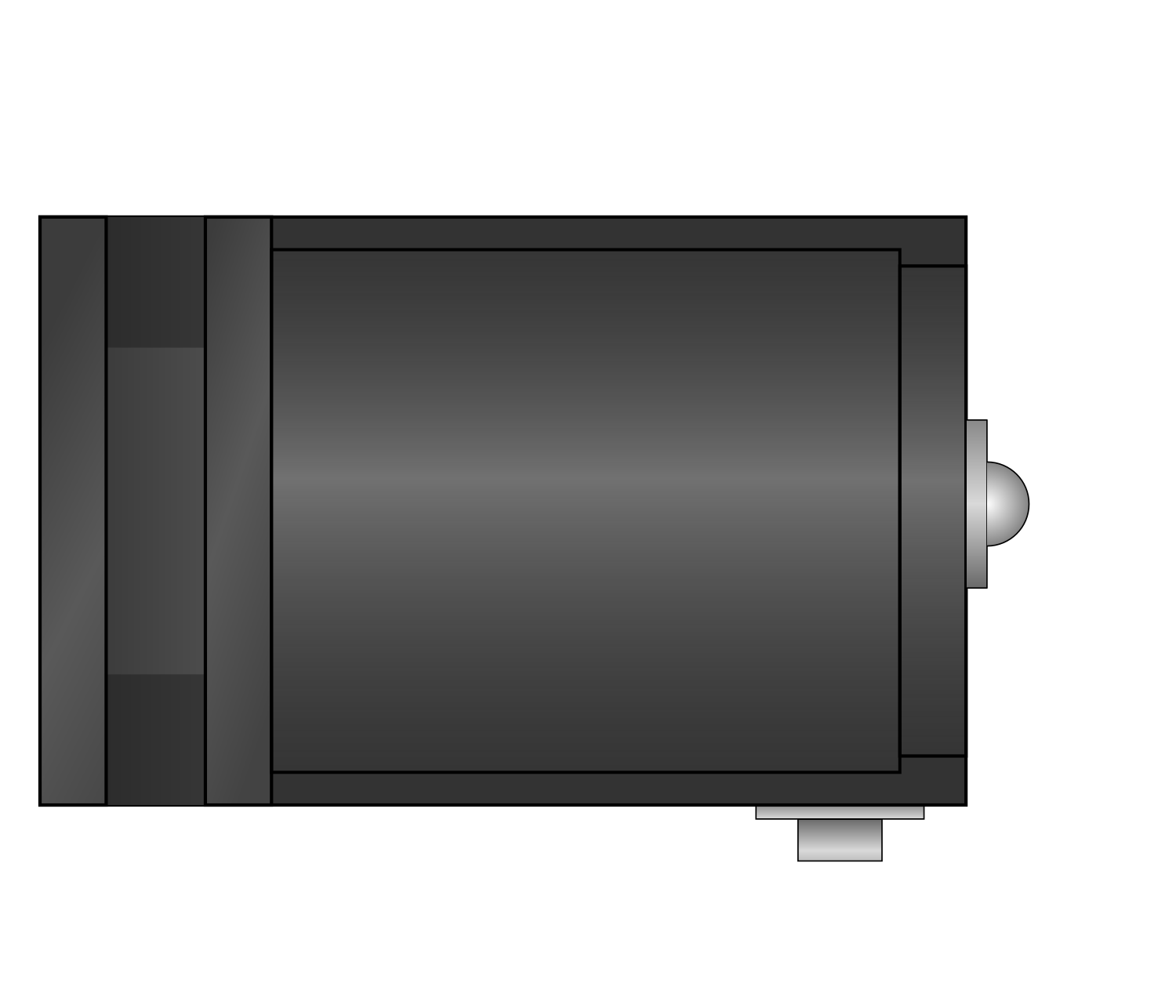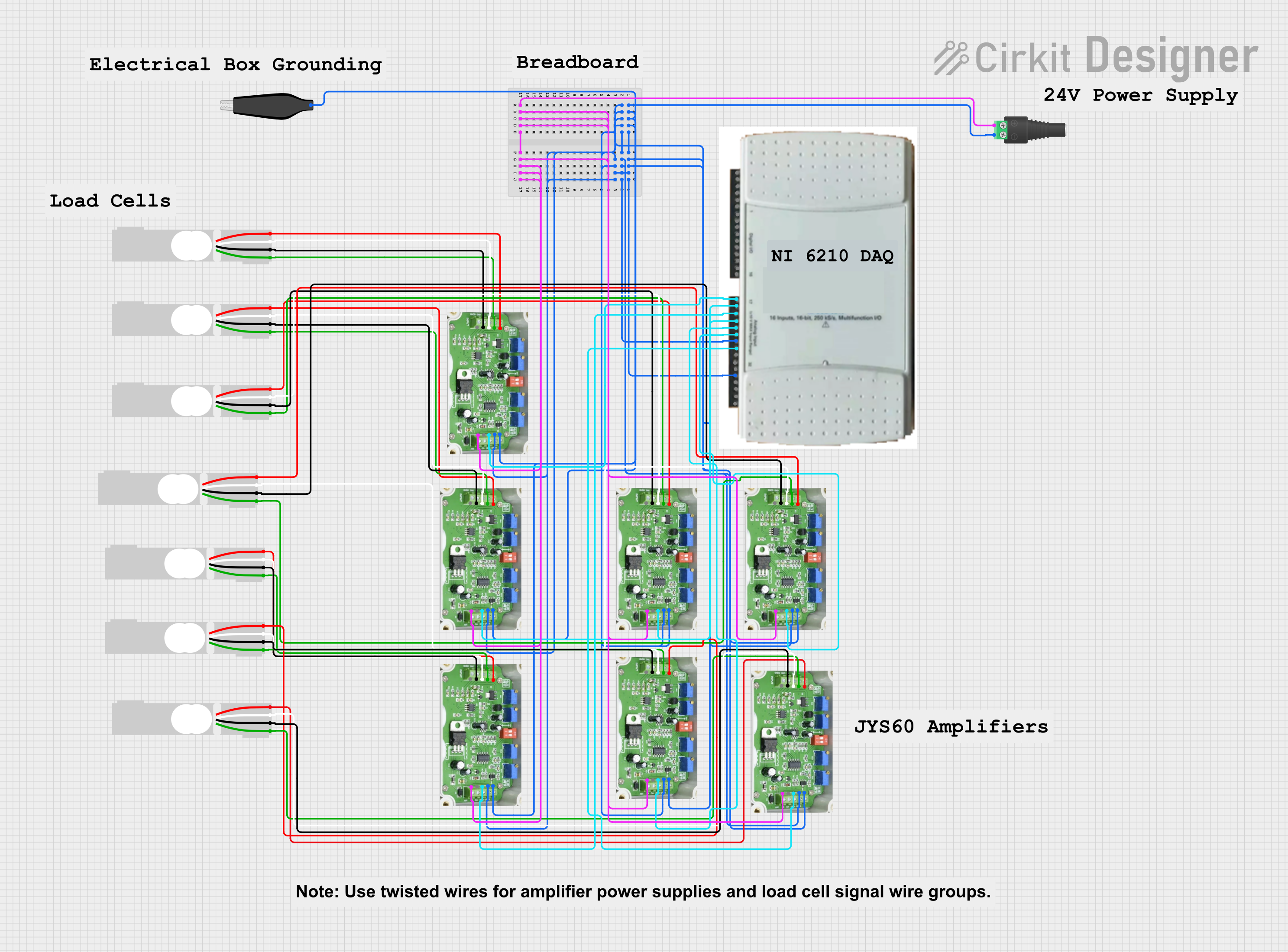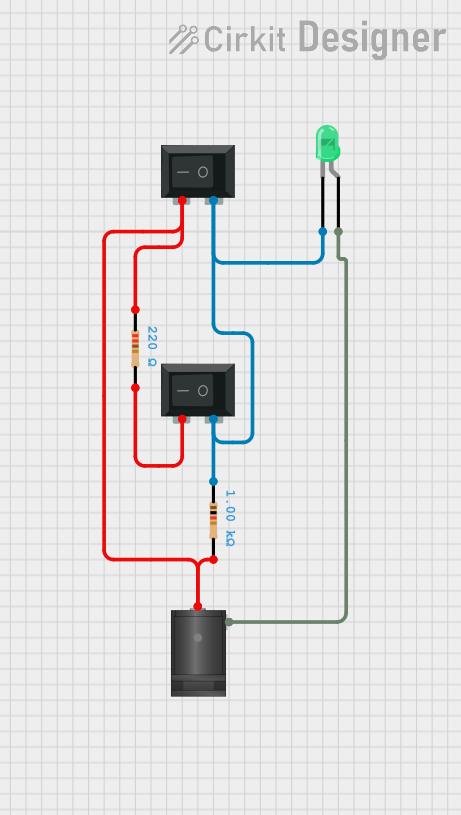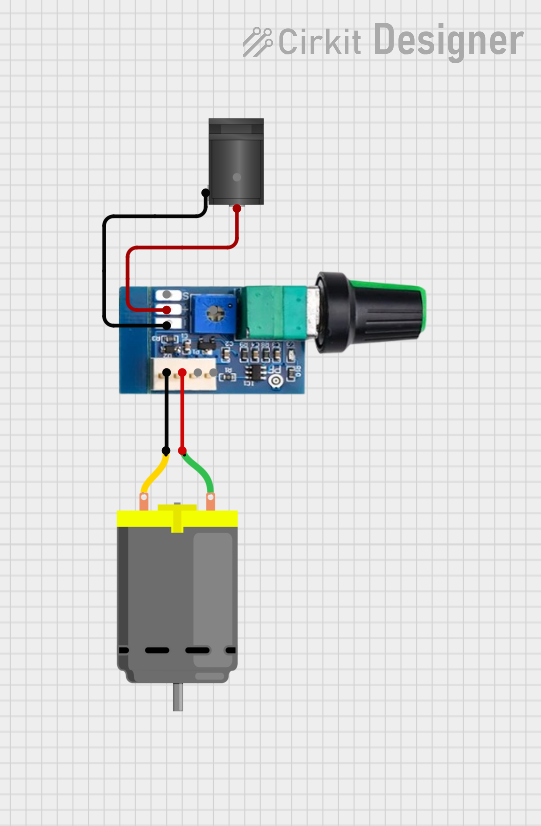
How to Use 2.1mm DC Barrel Jack to Pigtail: Examples, Pinouts, and Specs

 Design with 2.1mm DC Barrel Jack to Pigtail in Cirkit Designer
Design with 2.1mm DC Barrel Jack to Pigtail in Cirkit DesignerIntroduction
The 2.1mm DC Barrel Jack to Pigtail is a versatile connector designed to simplify the process of supplying DC power to electronic devices. It features a standard 2.1mm barrel jack on one end, compatible with most DC power adapters, and exposed wires (pigtail) on the other end for direct wiring into circuits or devices. This component is widely used in prototyping, DIY electronics projects, and powering small devices such as Arduino boards, LED strips, and other low-power electronics.
Explore Projects Built with 2.1mm DC Barrel Jack to Pigtail

 Open Project in Cirkit Designer
Open Project in Cirkit Designer
 Open Project in Cirkit Designer
Open Project in Cirkit Designer
 Open Project in Cirkit Designer
Open Project in Cirkit Designer
 Open Project in Cirkit Designer
Open Project in Cirkit DesignerExplore Projects Built with 2.1mm DC Barrel Jack to Pigtail

 Open Project in Cirkit Designer
Open Project in Cirkit Designer
 Open Project in Cirkit Designer
Open Project in Cirkit Designer
 Open Project in Cirkit Designer
Open Project in Cirkit Designer
 Open Project in Cirkit Designer
Open Project in Cirkit DesignerCommon Applications and Use Cases
- Powering Arduino boards and other microcontrollers
- Supplying power to LED strips, small motors, or sensors
- Prototyping and testing circuits
- Replacing or extending power connections in electronic devices
Technical Specifications
- Connector Type: 2.1mm DC barrel jack (female) to pigtail wires
- Wire Length: Typically 15–30 cm (varies by manufacturer)
- Wire Gauge: 22 AWG (common), suitable for low-power applications
- Voltage Rating: Up to 24V DC
- Current Rating: Up to 3A (depending on wire gauge and insulation)
- Polarity:
- Red wire: Positive (+)
- Black wire: Negative (−)
- Insulation Material: PVC or silicone (varies by manufacturer)
Pin Configuration and Descriptions
| Pin/Connection | Description |
|---|---|
| Barrel Jack Center | Positive terminal (+) |
| Barrel Jack Sleeve | Negative terminal (−) |
| Red Wire | Positive terminal (+) |
| Black Wire | Negative terminal (−) |
Usage Instructions
How to Use the Component in a Circuit
- Identify Polarity:
- The red wire corresponds to the positive terminal (+), and the black wire corresponds to the negative terminal (−). Ensure the polarity matches the requirements of your circuit or device.
- Connect to Power Source:
- Plug the 2.1mm barrel jack into a compatible DC power adapter.
- Wire to Circuit:
- Solder or connect the pigtail wires to the appropriate terminals in your circuit. Use screw terminals, wire nuts, or soldering for a secure connection.
- Verify Connections:
- Double-check the polarity and ensure there are no short circuits before powering the device.
Important Considerations and Best Practices
- Polarity Check: Always verify the polarity of the power adapter and the pigtail wires before connecting to avoid damaging your device.
- Current and Voltage Ratings: Ensure the power adapter and wires can handle the required current and voltage of your circuit.
- Strain Relief: Use cable ties or strain relief mechanisms to prevent stress on the wires and connections.
- Heat Management: Avoid exceeding the current rating of the wires to prevent overheating.
Example: Connecting to an Arduino UNO
The 2.1mm DC Barrel Jack to Pigtail can be used to power an Arduino UNO. Below is an example of how to connect it:
- Plug the barrel jack into a 9V DC power adapter.
- Connect the red wire to the VIN pin on the Arduino UNO.
- Connect the black wire to the GND pin on the Arduino UNO.
Sample Arduino Code
// Example code to blink an LED connected to pin 13 on the Arduino UNO
// Ensure the Arduino is powered using the 2.1mm DC Barrel Jack to Pigtail
void setup() {
pinMode(13, OUTPUT); // Set pin 13 as an output pin
}
void loop() {
digitalWrite(13, HIGH); // Turn the LED on
delay(1000); // Wait for 1 second
digitalWrite(13, LOW); // Turn the LED off
delay(1000); // Wait for 1 second
}
Troubleshooting and FAQs
Common Issues Users Might Face
Device Not Powering On:
- Cause: Incorrect polarity or loose connections.
- Solution: Verify the polarity of the wires and ensure all connections are secure.
Overheating Wires:
- Cause: Exceeding the current rating of the wires.
- Solution: Use a power adapter and wires rated for the required current.
Intermittent Power Loss:
- Cause: Poor connection between the barrel jack and the power adapter.
- Solution: Ensure the barrel jack is fully inserted into the power adapter and check for any damage.
Short Circuit:
- Cause: Exposed wires touching each other or other conductive surfaces.
- Solution: Use heat shrink tubing or electrical tape to insulate exposed wires.
FAQs
Q: Can I use this component with a 12V power adapter?
A: Yes, as long as the connected device and wires can handle 12V and the required current.
Q: Is the barrel jack compatible with all DC power adapters?
A: The barrel jack is compatible with most 2.1mm DC power adapters. However, ensure the adapter's polarity and size match the jack.
Q: Can I extend the pigtail wires?
A: Yes, you can extend the wires using additional wire of the same or higher gauge. Ensure proper insulation and secure connections.
Q: What happens if I reverse the polarity?
A: Reversing the polarity can damage your device. Always double-check the polarity before connecting.